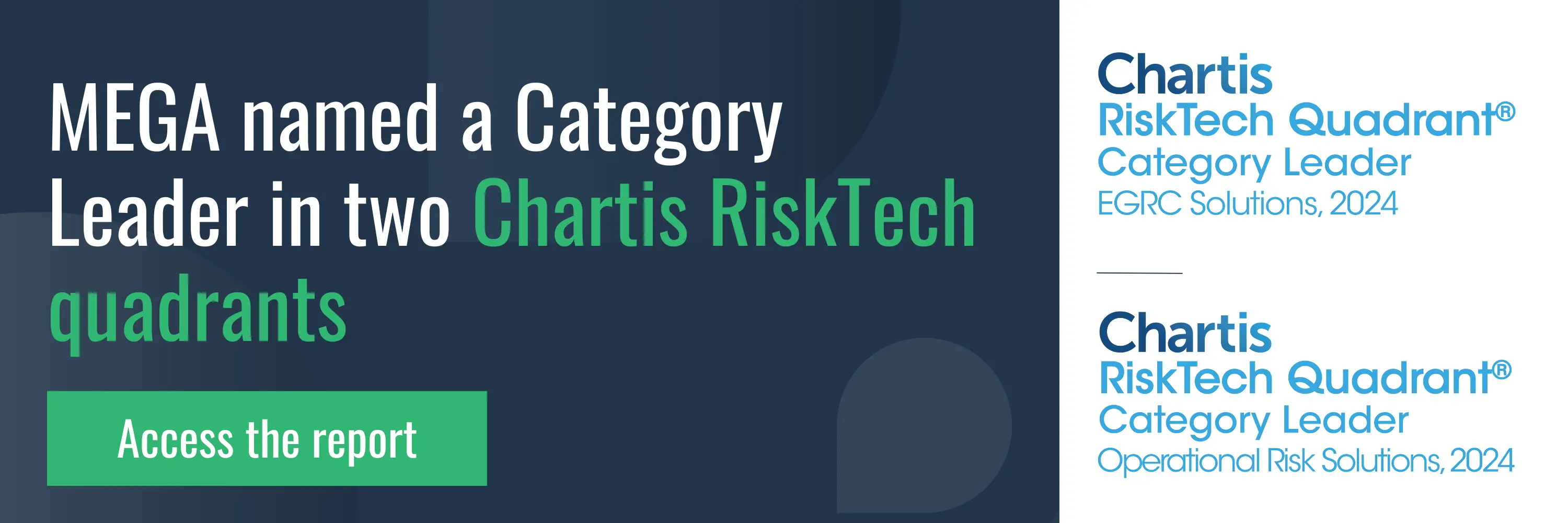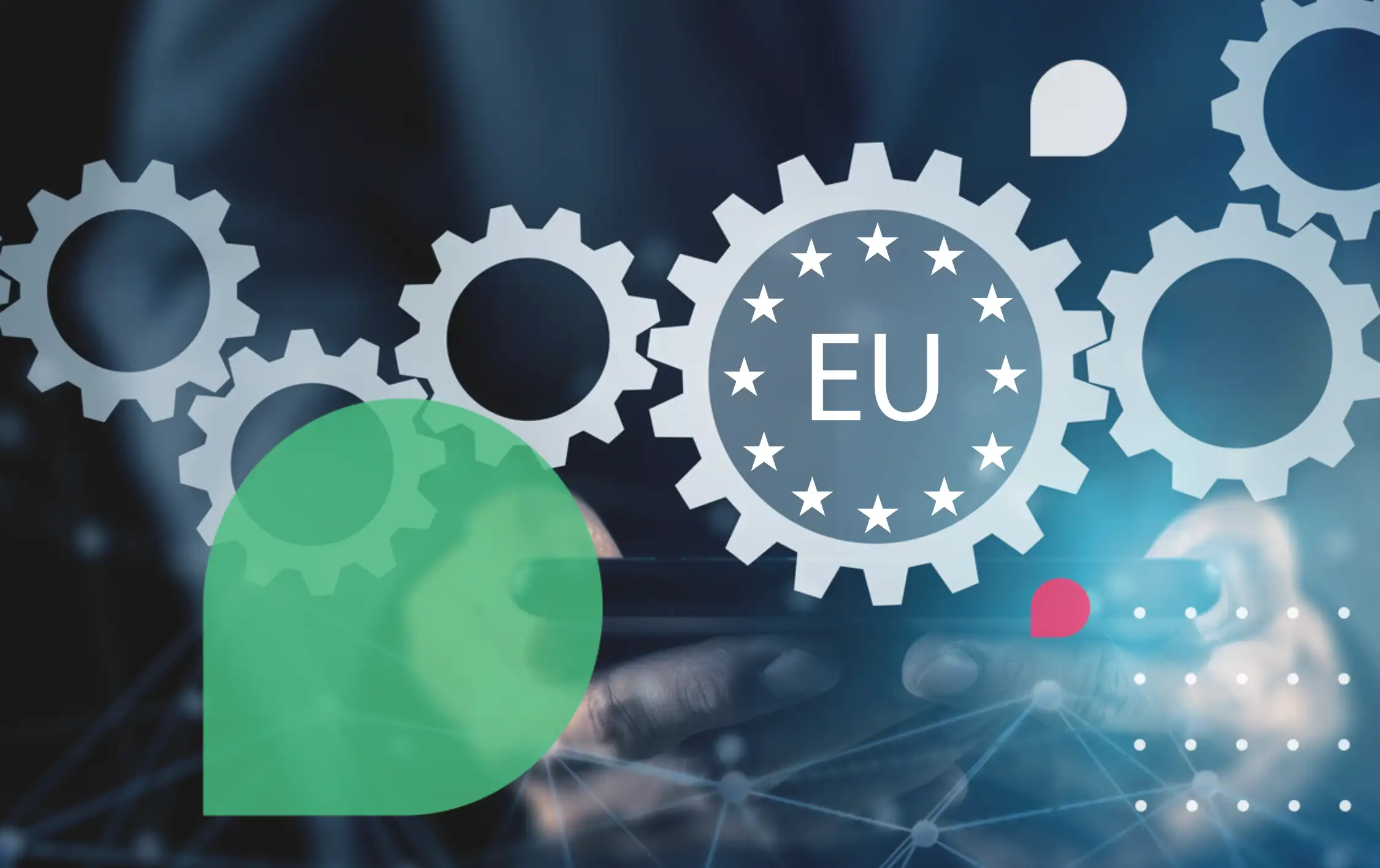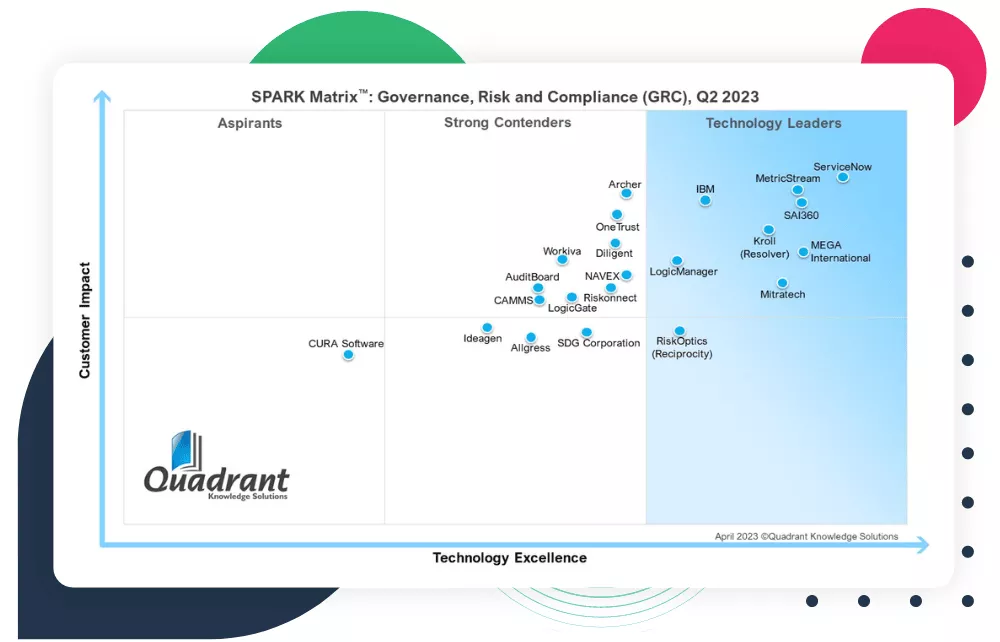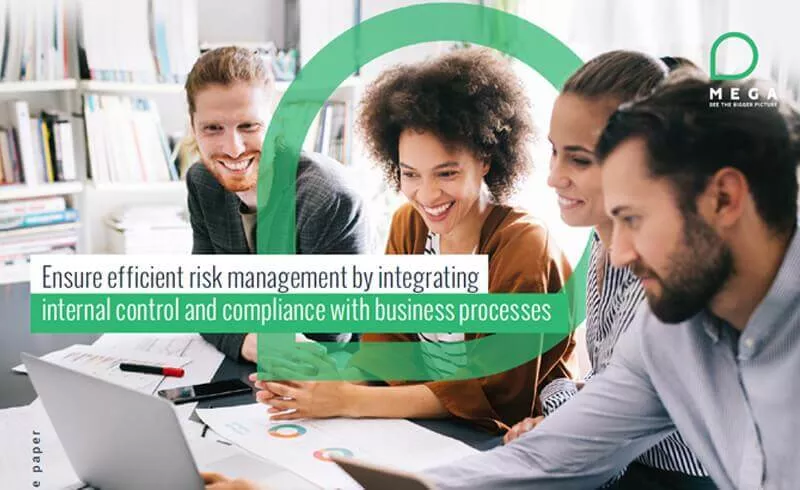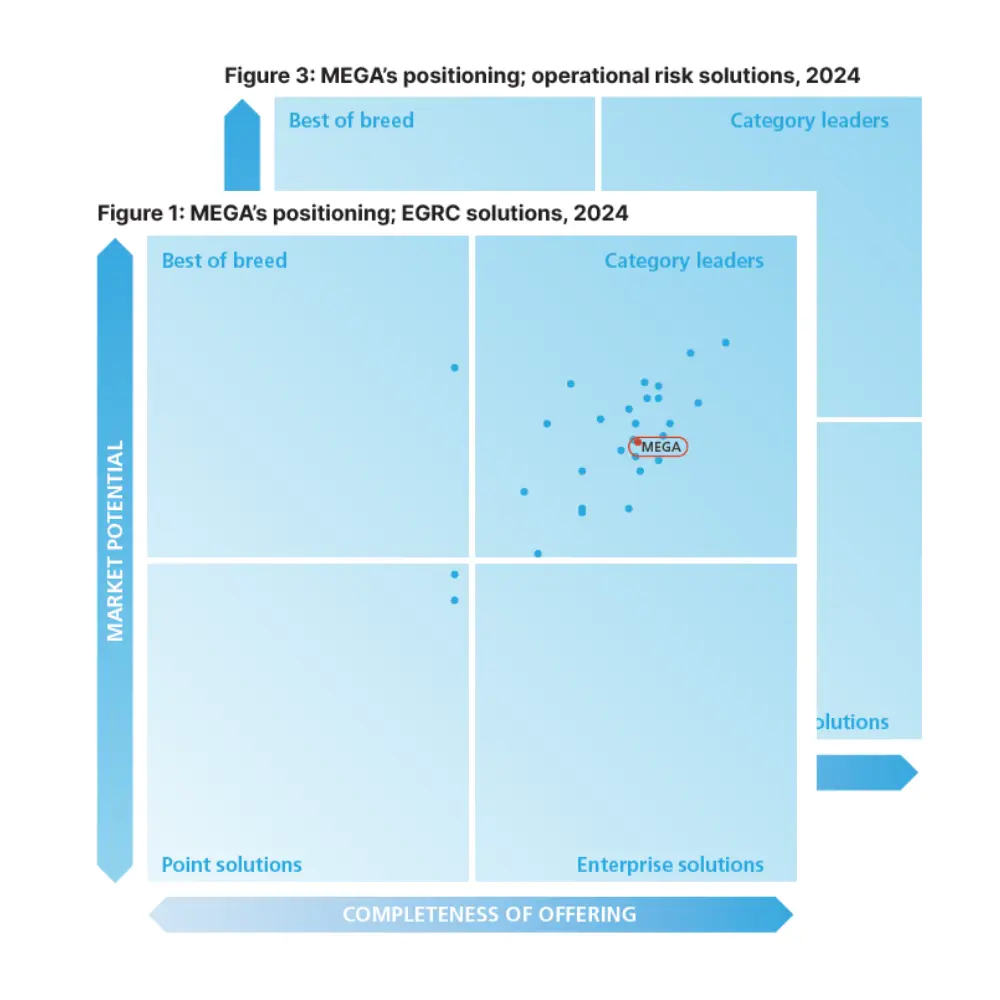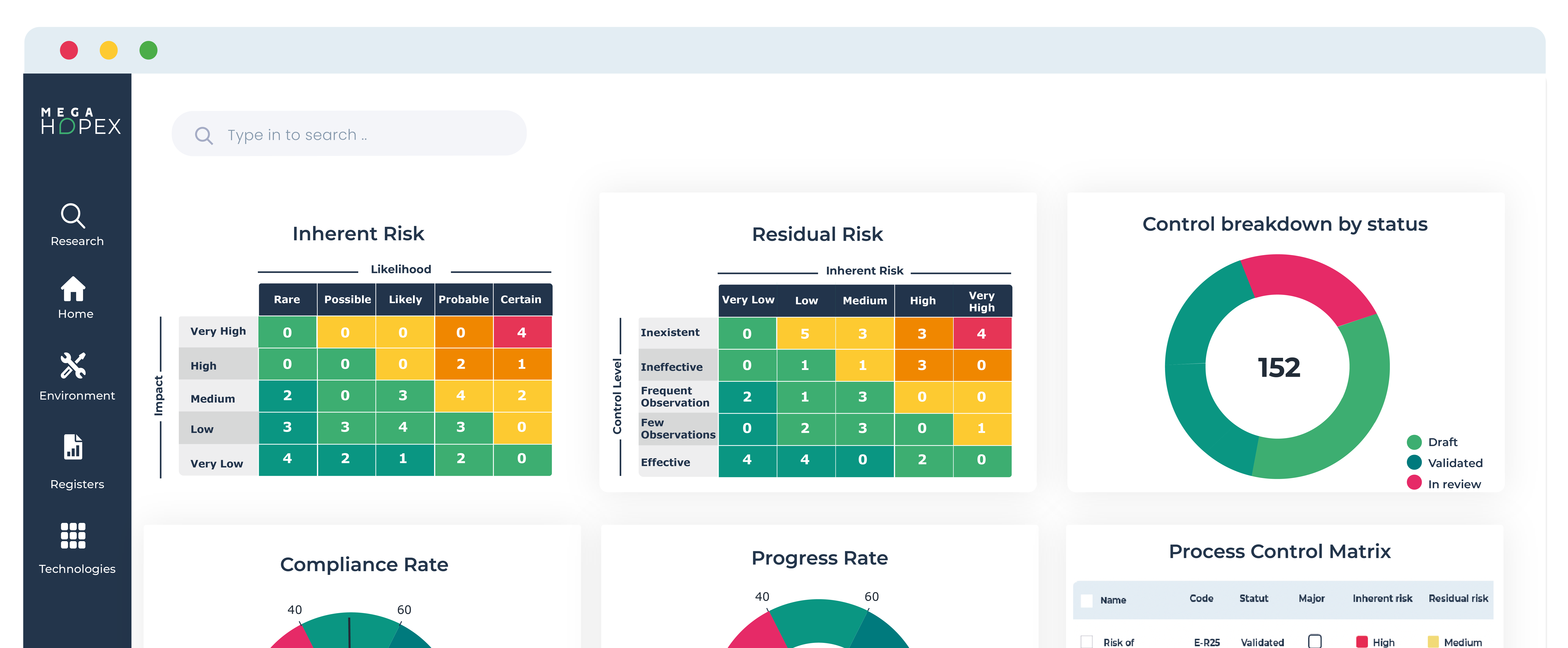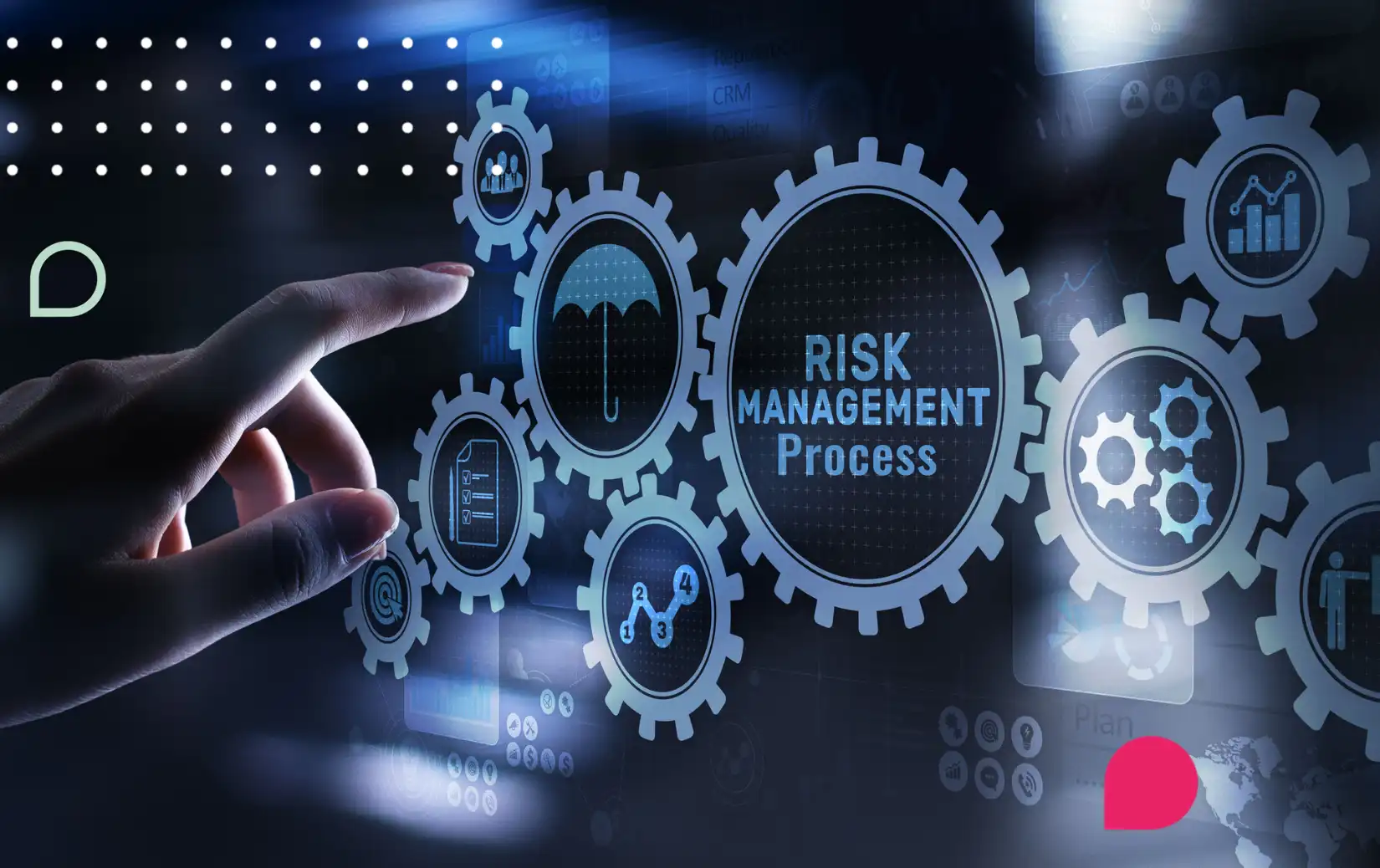
Risk Management Process - The must-have guide
Risk Management process is an essential aspect of any organization's operations. It involves identifying, analyzing, and mitigating potential risks that could impact the achievement of business objectives. This article will explore the Risk Management process, outlining its essential components and goals.
What is the Risk Management process?
Risk Management process identifies, assesses, and controls risks to an organization's operations, assets, and financial health. This process is a comprehensive framework involving the systematic identification, thorough analysis, meticulous evaluation, and strategic mitigation of potential risks that threaten the organization.
This can include internal risks, such as personnel issues or operational inefficiencies, and external risks, such as economic downturns or natural disasters.
Upon identifying these risks, a detailed analysis follows, examining their origins, potential impact, and likelihood of occurrence. This analysis is then rigorously evaluated, considering various factors such as financial implications, operational disruptions, and reputational damage. Subsequently, strategies are formulated to mitigate and manage these risks effectively, safeguarding the organization's stability and resilience.
These steps often involve using risk assessment tools and techniques to evaluate the risks quantitatively and qualitatively. They include conducting a detailed impact analysis on the business objectives at risk, managing and enriching the control library, and enhancing and reinforcing the Risk Management process.
The Risk Management process is vital to effective organizational management, shielding the organization from potential harm. Yet, its essence is a continuous loop of identification, evaluation, and mitigation, an ongoing adaptation to the ever-evolving landscape of risks and challenges. It stands as an ever-vigilant sentinel, safeguarding the organization's objectives amidst the dynamic currents of regulations.
Embracing an Effective Risk Management Process
The Risk Management process might sound like a complex puzzle, but at its core, it's about understanding, preparing for, and tackling potential threats in a way that doesn't slow down progress but enhances it. So, what exactly is this thing called "Effective Risk Management process"?
Imagine it like a guardian for your business. It's about identifying potential threats that could throw a wrench in your plans, analyzing how they could mess things up, and then getting ready to tackle them head-on. Michael Bloomberg describes its essence by saying, "Effective Risk Management means identifying potential threats, analyzing their impact, and preparing to mitigate their consequences."
But it's not just about spotting trouble from a distance. Richard Branson hits the nail on the head: "Effective Risk Management involves understanding the risks, preparing for them, and mitigating their impact on your objectives." It's about being proactive rather than reactive.
Some believe compliance with policies and standards defines effectiveness, but are those rules enough to handle the storms of risks? Others rely on audits or assessments based on our discussed criteria.
So, there's this whole talk about what makes a Risk Management process effective. ISO standards outline principles like creating value, blending it into your workflows, and customizing it to fit your company culture. But it's not just about going down a checklist. It's more like weaving the Risk Management process into decision-making and being flexible enough to dance with uncertainty and changes.
An effective Risk Management process, in essence, is about readiness, adaptability, and a mindset that doesn't just anticipate problems but actively prepares for them. It's the difference between being caught off guard and standing tall in adversity.
Risk Management Process Steps
The Risk Management process typically involves five key steps: risk identification, risk analysis, risk assessment, risk treatment, and risk monitoring.
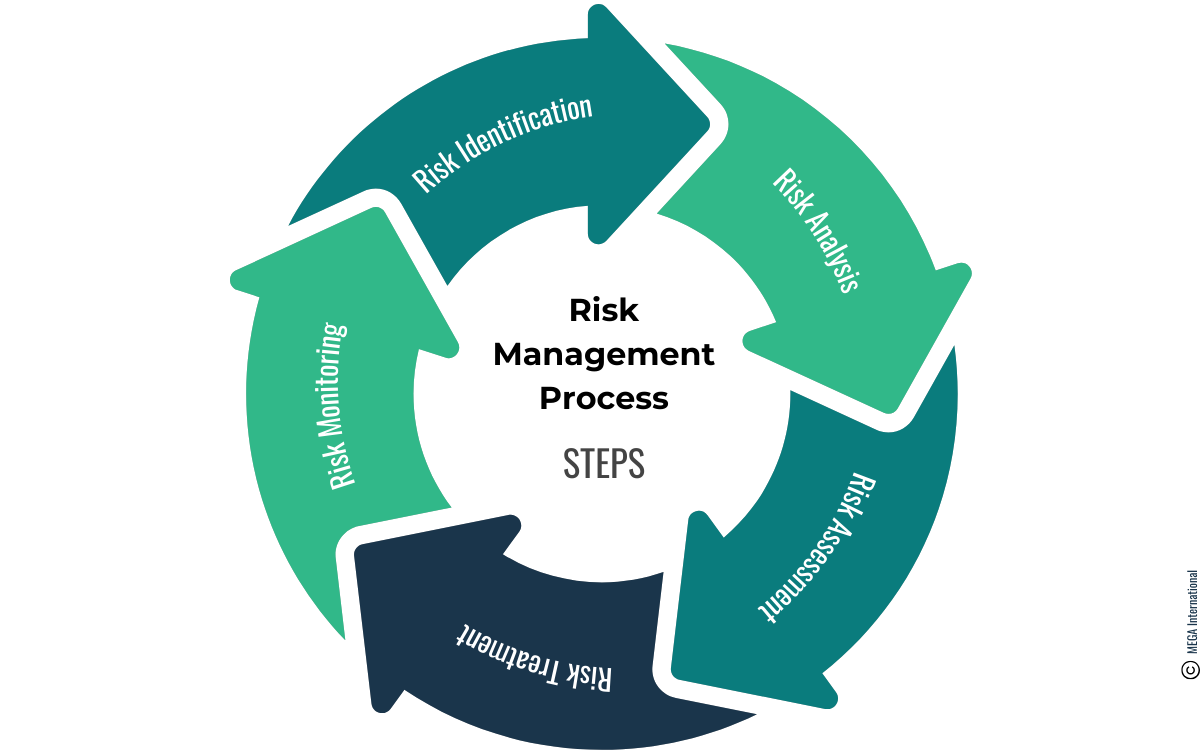
Risk identification
Risk identification is the crucial first step in the Risk Management process. It involves recognizing potential risks impacting the organization's objectives and operations.
Consulting a Risk Library streamlines and accelerates the risk identification process, consequently expediting the creation of a comprehensive Risk Register. Risk libraries facilitate a more systematic and efficient identification of potential risks and aid in categorizing and classifying these risks.
Leveraging the predefined risk categories and descriptions within the library, risk managers can swiftly identify and document specific risks pertinent to their organization, contributing to a more robust and structured risk register and enabling a more focused and effective risk management process strategy.
Organizations may encounter various types of risks, including operational risks, financial risks, strategic risks, compliance risks, and reputational risks.
Examples of risks that organizations may face include, but are not limited to, cybersecurity threats, project management uncertainties, regulatory changes, and natural disasters.
Risk analysis
After identifying a risk, it requires examination. Understanding the risk's extent and its correlation with various organizational factors is crucial: linking risks to multiple documents, policies, procedures, business processes, factors, consequences… All this information establishes a mapped Risk Management process framework, making the next steps quicker, easier, and more accurate.
Risk assessment
The next step is to assess our risks' potential impact and likelihood. This involves quantifying risks by assigning probabilities and consequences to them.
Risk assessment helps prioritize risks based on their significance and enables organizations to focus their resources on handling the most critical ones:
This step helps prioritize the risks that require immediate attention.
Risk treatment
Once identified, analyzed, and assessed, risks are managed through mitigation strategies: risk avoidance, reduction, transfer, or acceptance.
Risk mitigation strategies involve implementing measures to minimize the likelihood and impact of identified risks, which might include implementing plans and controls to reduce the probability of risk occurrence or to decrease its effects if it were to happen.
Operational continuity, triggered by a risk, holds significant importance, too: when a risk materializes, the ability to maintain operational continuity becomes a pivotal aspect of the Risk Management process.
Implementing robust continuity plans and procedures not only aids in minimizing disruptions caused by the risk event but also serves as a proactive element of risk treatment. By having contingency measures in place, organizations can swiftly respond to the impact, ensuring that essential functions continue despite the occurrence of the risk.
This aspect of Risk Treatment only focuses on mitigating the risk itself. Still, it emphasizes preparing and ensuring the organization's resilience in adverse events, safeguarding its core operations and functions, and providing compliance with the most recent and future regulations.
Risk monitoring
This step is critical for the governance of the enterprise, involving continuous monitoring of the effectiveness of implemented Risk Management process strategies. It's an ongoing process, requiring periodic reviews to ensure that Risk Management process tactics are appropriate and updated concerning risk evolution and organizational changes. Regular monitoring helps identify new risks, evaluate the effectiveness of existing controls, and make necessary adjustments to enhance the overall Risk Management process.
Benefits of an Effective Risk Management Process
An effective Risk Management process is crucial for the success and sustainability of any organization. By identifying and assessing potential risks, organizations can put in place measures to mitigate or eliminate them, ultimately protecting their reputation, assets, and finances.
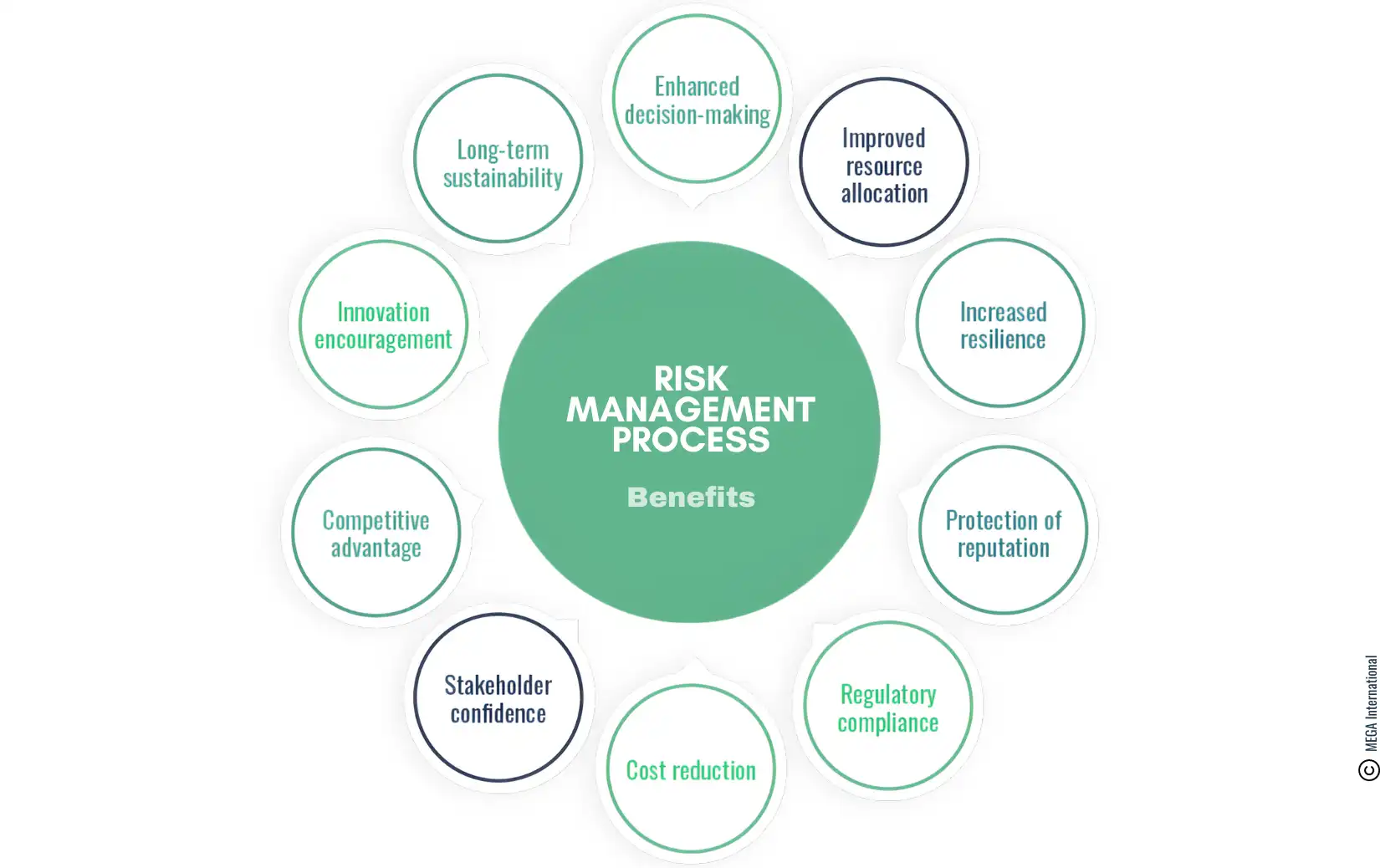
An effective Risk Management process offers numerous benefits:
- Enhanced decision-making: an effective risk management process that provides informed insights that aid in making strategic and operational decisions more confidently and clearly.
- Improved resource allocation enables allocating resources more efficiently and effectively by identifying and prioritizing risks, ensuring optimal resource utilization.
- Increased resilience: an effective Risk Management process enhances an organization's resilience, allowing it to adapt and respond swiftly to unexpected events or challenges.
- Protection of reputation safeguards an organization's reputation by proactively addressing risks and minimizing potential damage to its brand or public image.
- Regulatory compliance: it assists in maintaining compliance with regulations and industry standards, reducing the likelihood of penalties or legal issues.
- Cost reduction: identifying and mitigating risks early helps minimize potential losses, thereby reducing costs associated with risk incidents.
- Stakeholder confidence: a robust Risk Management process instills confidence in stakeholders (investors, customers, and employees), showing that risks are managed effectively.
- Innovation encouragement: an effective Risk Management process fosters a culture that encourages innovation and calculated risk-taking by providing a structured approach to managing uncertainties.
- Long-term sustainability: it contributes to the long-term sustainability of an organization by proactively addressing risks that could threaten its stability or growth.
- Competitive advantage: Organizations with effective risk management processes are often better positioned to seize opportunities and gain a competitive edge in their industry or market.
To recap, the effectiveness of a Risk Management process extends far beyond risk avoidance; it's the backbone of an organization's success and sustainability. Organizations fortify their foundation by proactively identifying, assessing, and mitigating risks, shielding themselves from potential threats while maximizing opportunities.
READ: What is Risk Management?
In a landscape riddled with uncertainties, a well-executed Risk Management process isn't just a shield but a catalyst for growth and longevity, positioning organizations to navigate challenges while thriving in a dynamic environment.
The role of Enterprise Risk Management Solutions in the Risk Management process
Enterprise Risk Management solutions offer comprehensive approaches to managing risks across the organization, ensuring a coordinated and integrated approach to the Risk Management process.
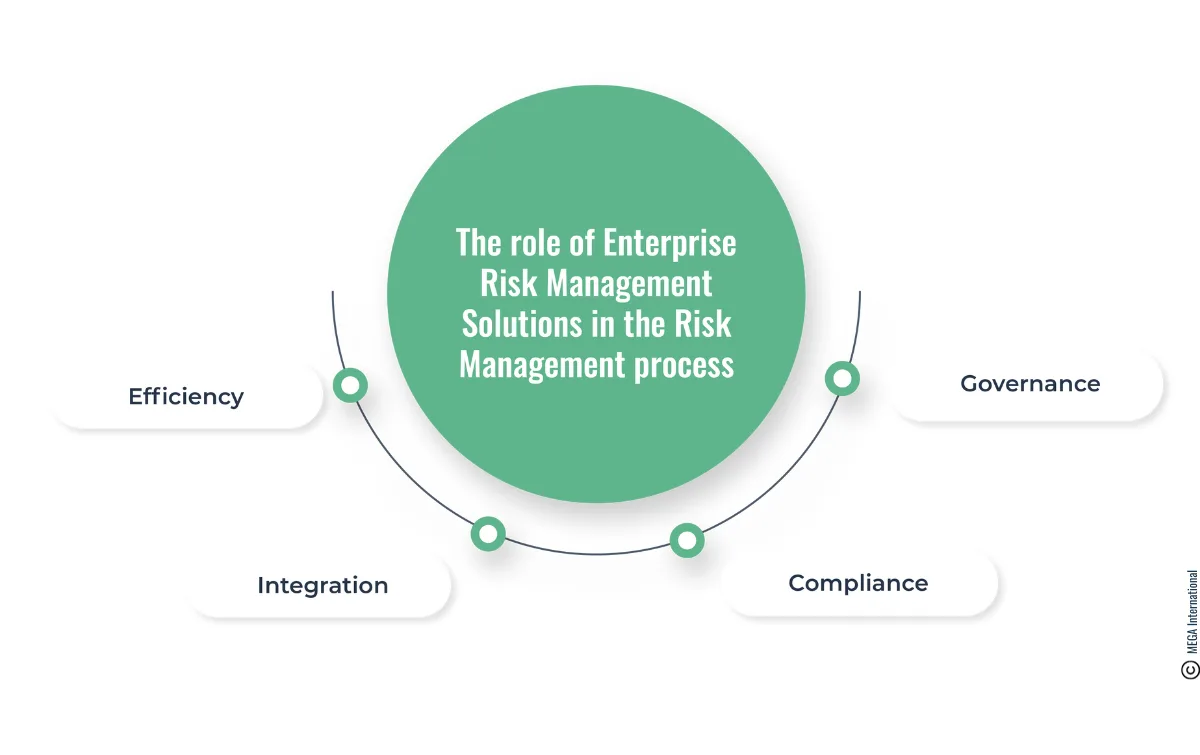
Managing risks has become a cornerstone of organizational success in our rapidly evolving business landscape. The complexity and diversity of risks faced by modern businesses require an agile and tech-driven solution, making Enterprise Risk Management (ERM) systems the best and better-tailored choice to navigate the intricate evolving landscape of risks that businesses encounter.
Efficiency and Integration
Disjointed risk data scattered across spreadsheets are seen today as vintage documents. The digital shift towards ERM solutions brings a unified platform that streamlines the entire risk management process within the whole enterprise, embracing GRC subjects and recreating and analyzing the entire company in all its components. These systems are designed to centralize risk-related information, allowing for efficient collaboration, analysis, and decision-making across all departments.
These platforms offer a holistic view of risks, aligning them with business objectives, strategies, processes, and ICT. This integration fosters proactive risk identification, assessment, and mitigation, minimizing potential disruptions and enhancing operational efficiency.
Enhanced Compliance and Governance
Within the continuously evolving regulatory landscape companies need to face, ERM solutions act as a compass, guiding compliance efforts. These systems automate compliance monitoring, ensuring adherence to regulations and industry standards while establishing transparent risk processes.
The Future of Risk Management process: the power of AI-Powered
The recent integration of AI has revolutionized the landscape of the risk management process, making the process notably simpler, quicker, and standardized. Integrating AI within these tools brought a new era for the Risk Management process by swiftly analyzing vast volumes of data, identifying patterns, and predicting potential risks.
These systems automate more straightforward tasks and enhance decision-making by providing real-time insights and risk forecasting.
AI adapts and learns from historical data by employing machine learning algorithms and continuously improving risk models and strategies.
The result is a more efficient and standardized Risk Management process, empowering organizations to tackle risks while proactively enabling agile responses to evolving threats.
One key aspect where AI can significantly impact the risk management process is data analysis. AI-powered algorithms can efficiently process vast amounts of data from multiple sources, enabling organizations to identify patterns, trends, and potential risks more effectively.
By leveraging machine learning techniques, AI can continuously learn from new data and adapt its risk assessment models accordingly, providing more accurate predictions and proactive Risk Management process strategies.
Moreover, AI can assist in automating routine Risk Management process tasks, freeing up valuable time and resources for organizations. With the ability to handle repetitive and time-consuming processes, such as data collection and analysis, AI can streamline Risk Management process workflows. This automation improves efficiency and reduces the chance of human error, ensuring more reliable risk assessments.
In addition to data analysis and automation, AI can contribute to real-time risk monitoring and early warning systems. By monitoring various data sources concurrently, AI algorithms can promptly identify emerging risks and alert risk managers accordingly. This proactive approach allows organizations to take swift action and implement preventive measures before risks escalate into significant problems.
However, it is essential to note that while AI offers valuable insights and automation capabilities, human expertise remains crucial in Risk Management. Human judgment and experience are necessary to interpret AI-generated insights accurately and make informed decisions. Collaborating with AI technology can empower risk managers to make better-informed choices and optimize Risk Management process strategies.
Despite the promising benefits, applying AI to the Risk Management process also brings challenges that must be considered. Ethical concerns, data privacy issues, and potential biases in AI algorithms are vital areas that need careful attention. Organizations must ensure transparent and accountable AI practices, addressing these challenges to maintain trust and credibility in their Risk Management processes.
Summary
In the dynamic landscape of modern business, the Risk Management process is not just a buzzword but an indispensable fortress, shielding organizations from potential threats while amplifying opportunities from dissecting the core components of a Risk Management process to unveiling the profound impact of Enterprise Risk Management solutions.
It's not merely a checklist, but a strategic framework deeply rooted in the DNA of successful enterprises, ensuring efficient resource allocation, regulatory compliance, and stakeholder confidence. Yet, the real game-changer emerges with the infusion of AI into Risk Management.
owever, as AI unlocks new possibilities, it introduces ethical considerations and challenges demanding attention. Balancing the potential and pitfalls of AI in the Risk Management process calls for responsible implementation, exploiting its capabilities while ensuring transparency, accountability, and human expertise.
FAQs
The Risk Management process encompasses a structured framework used by organizations to identify, analyze, and mitigate potential risks that could affect their objectives. It involves a systematic approach to understanding, evaluating, and managing uncertainties that might impact an organization's operations, assets, or financial stability.
The steps in the Risk Management process typically consists of 5 steps:
- risk identification,
- risk analysis,
- risk assessment,
- risk treatment,
- risk monitoring.
These steps are essential for creating an effective Risk Management process.
Identifying risks involves a comprehensive approach, including various techniques such as brainstorming sessions, historical data analysis, scenario analysis, SWOT analysis, and risk assessment tools. Engaging stakeholders, conducting risk assessments, and reviewing historical incidents are among the methodologies to identify potential and new risks comprehensively.
A risk register is a documented repository catalogs identified risks within an organization. It includes information such as the nature of the risk, its potential impact, the likelihood of occurrence, existing controls, assigned ownership, and planned or implemented responses. The risk register is a reference point for managing and tracking identified risks throughout their lifecycle.
Effective Risk Management involves various strategies such as risk avoidance, reduction, transfer, and acceptance. Organizations utilize these strategies based on their analysis of identified risks, implementing appropriate measures to eliminate or mitigate the impact of risks while continuously monitoring and reviewing their effectiveness.
Enterprise Risk Management (ERM) is a holistic approach that integrates the Risk Management process across an entire organization. It aligns Risk Management strategies with an organization's objectives, culture, and processes, ensuring a coordinated effort in identifying, assessing, and mitigating risks. ERM enhances Risk Management processes by fostering a culture of risk awareness, improving collaboration, and offering a comprehensive view of risks across the enterprise
A robust Risk Management process comprises critical components, including risk identification methodologies, comprehensive risk analysis techniques, a well-defined risk assessment process, effective risk treatment strategies, continuous risk monitoring, and a structured framework for documenting and tracking risks. Additionally, stakeholder involvement, clear communication channels, and a culture that promotes risk awareness are vital elements for a robust Risk Management process.
Governance, Risk and Compliance Related Content
Enhance operational resilience using integrated risk management
MEGA HOPEX for GRC
Request a demonstration of HOPEX for GRC, and see how you can have immediate value of your projects.




